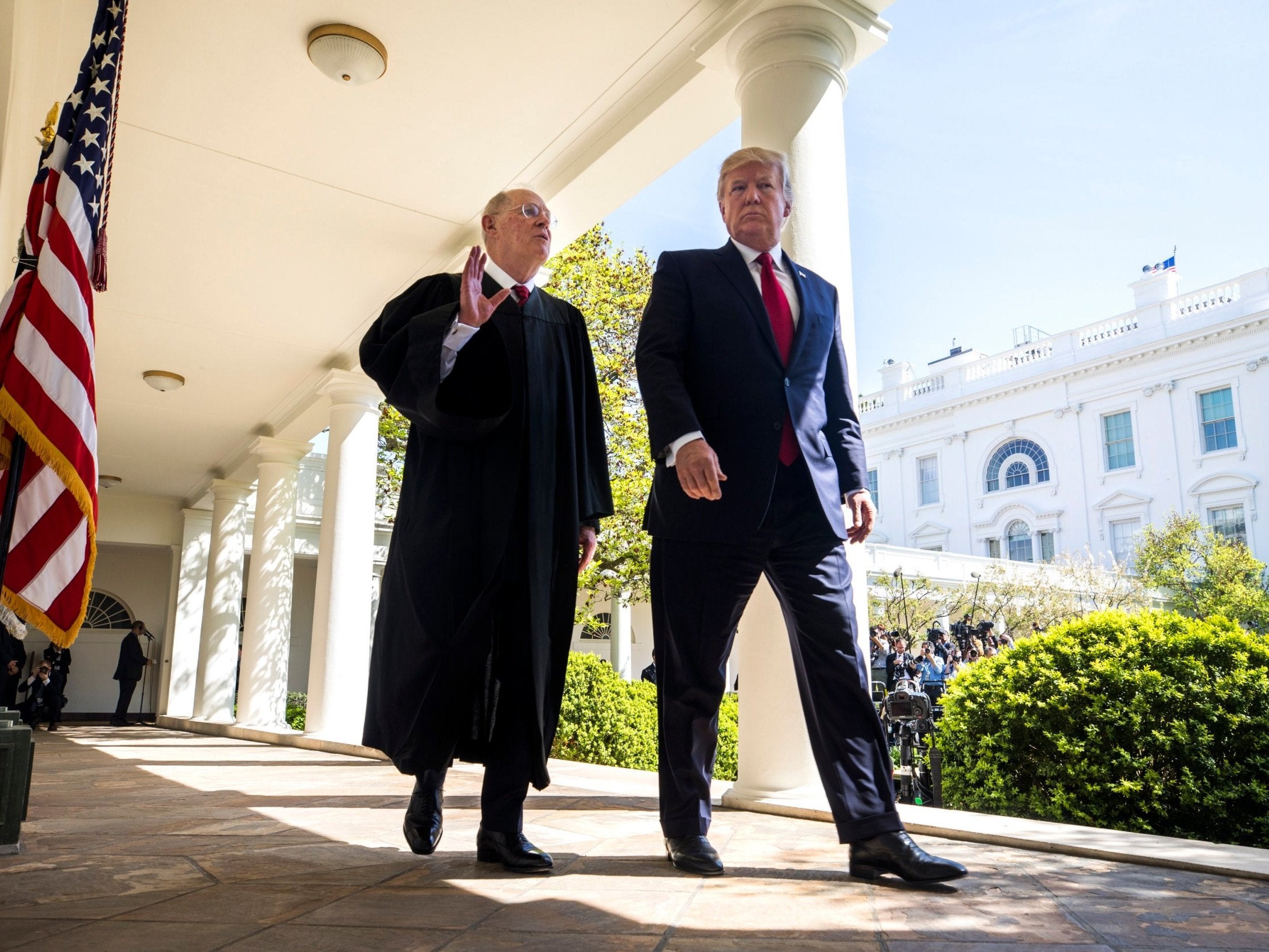Roe v Wade: What is the landmark US abortion ruling and will Brett Kavanaugh's tenure jeopardise it?
President Trump's pick to succeed long-serving Supreme Court judge will have huge impact on future legislative policy towards women's rights

The retirement of US Supreme Court Justice Anthony Kennedy could have dramatic repercussions for US law – particularly in relation to abortion.
Despite his reputation as a conservative, Mr Kennedy, 81, was long seen as pro-choice and famously sided with his liberal counterparts in Planned Parenthood v Casey in 1992, a decision that reaffirmed the court’s view that access to abortion was a fundamental right protected by the constitution - first established by Roe v Wade in 1973.
Donald Trump has since nominated his preferred candidate to succeed Mr Kennedy from a shortlist of 25 and chosen Brett Kavanaugh, a choice women's rights activists fear will see the ideology of the country’s highest court pulled closer to that of the Republican Party.
In particular, pro-choice organisations are concerned that a conservative dominance of the Supreme Court would clear the path for the ultimate repeal of Roe v Wade, reversing the court’s position and allowing conservative states to implement policies many regard as dangerously regressive.
What is the case in question and how did it come to pass?
Roe v Wade saw the Supreme Court rule seven-to-two on 22 January 1973 that the right to privacy given under the 14th Amendment extended to abortions, a verdict that found the criminalisation of abortion unconstitutional.
“Jane Roe” was the legal pseudonym of plaintiff Norma McCorvey, a young woman who had sought an abortion in Texas after becoming pregnant for the third time aged 21.
She had hoped to obtain a legal termination, only permitted by state law in cases of rape or incest at the time, so falsely reported that her pregnancy was the result of a sexual assault.
She later admitted the lie when police failed to find evidence to support her claim and gave birth, the child later given up for adoption.
Her circumstances were then brought to the attention of attorneys Linda Coffee and Sarah Weddington, who sought to challenge Texas state law on the issue, filing a suit in the United States District Court for the Northern District of Texas in 1970.
The pair squared off against Dallas district attorney Henry Wade, famed for having prosecuted Jack Ruby for the murder of Lee Harvey Oswald in 1963 when the latter was in police custody, charged with the assassination of President John F Kennedy.
A three-judge District Court panel agreed unanimously with Ms Coffee and Ms Weddington’s contention but did not grant an injunction obliging the state to enforce the law.
The issue gained additional traction in 1971 when Shirley Wheeler was charged with manslaughter in Florida after hospital staff reported her illegal abortion to the police, prompting an angry demonstration from the Boston Women’s Abortion Coalition in a show of solidarity.
After further trials arguing for the implementation of the District Court’s ruling, the Roe case reached the Supreme Court on 13 December 1971, where Ms Coffee and Ms Weddington again faced Wade.
The hearing opened with “the worst joke in legal history” courtesy of attorney Jay Floyd, addressing Chief Justice Warren E Burger: “Mr Chief Justice and may it please the court. It’s an old joke, but when a man argues against two beautiful ladies like this, they are going to have the last word.”
His attempt at levity was met with a deafening silence and a severe glare from Mr Berger.
In the court's opinion, authored by Justice Harry Blackmun, the judges ultimately agreed with the plaintiffs' argument on the grounds that the 14th Amendment privileged personal liberty over state power, but did stress the need to balance regulatory concerns at state level with the best interests of women’s health and protecting the potential of human life.
The Roe v Wade ruling found that a woman had a right to an abortion until “fetal viability”, defined as the third trimester of pregnancy (29-40 weeks) when an infant was “potentially able to live outside the mother’s womb, albeit with artificial aid”.
In the subsequent Planned Parenthood v Casey ruling that Mr Kennedy played a part in, this definition was rejected when the Supreme Court acknowledged that viability could occur as early as 23 or 24 weeks thanks to more recent medical advances.
Although Ms McCorvey was victorious, she later came to feel she had been used as a “pawn” by her attorneys – seeking to make a name for themselves – and changed her view on abortion entirely, becoming a Roman Catholic and supporting the pro-life movement.
The Roe v Wade ruling not only guaranteed the rights of women to obtain an abortion, it also opened the debate at a national level about the individual’s right to choose, dividing the country into pro-choice and pro-life factions. The debate still rages today.
In June 2016, the Supreme Court again struck a blow for pro-choice activists by ruling that a new raft of restrictions on clinics by Texas legislators was unconstitutional, a decision met with jubilation by grassroots activists demonstrating outside at the courthouse steps in Washington, DC.
And as recently as this July, the Supreme Court blocked a California law requiring clinics that counsel women against abortion to notify clients of the availability of abortions paid for by the state, finding that it violated the free speech rights of these Christian facilities.
Join our commenting forum
Join thought-provoking conversations, follow other Independent readers and see their replies
Comments
Bookmark popover
Removed from bookmarks